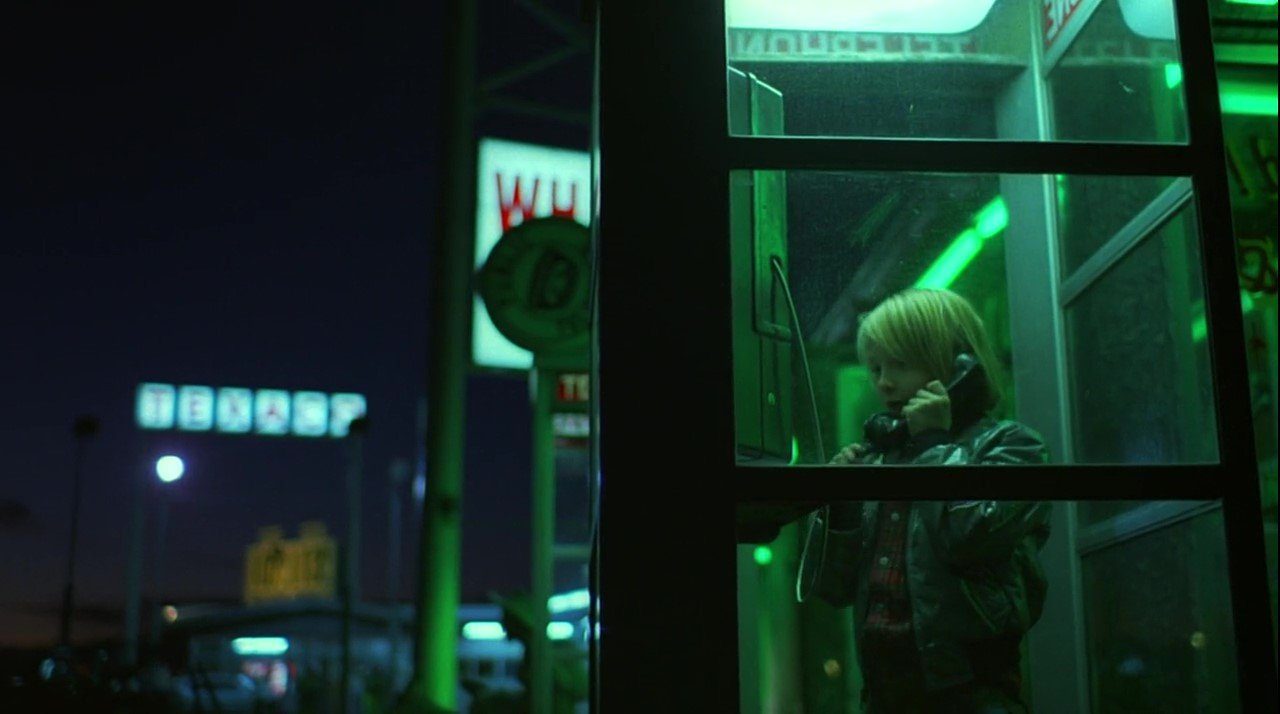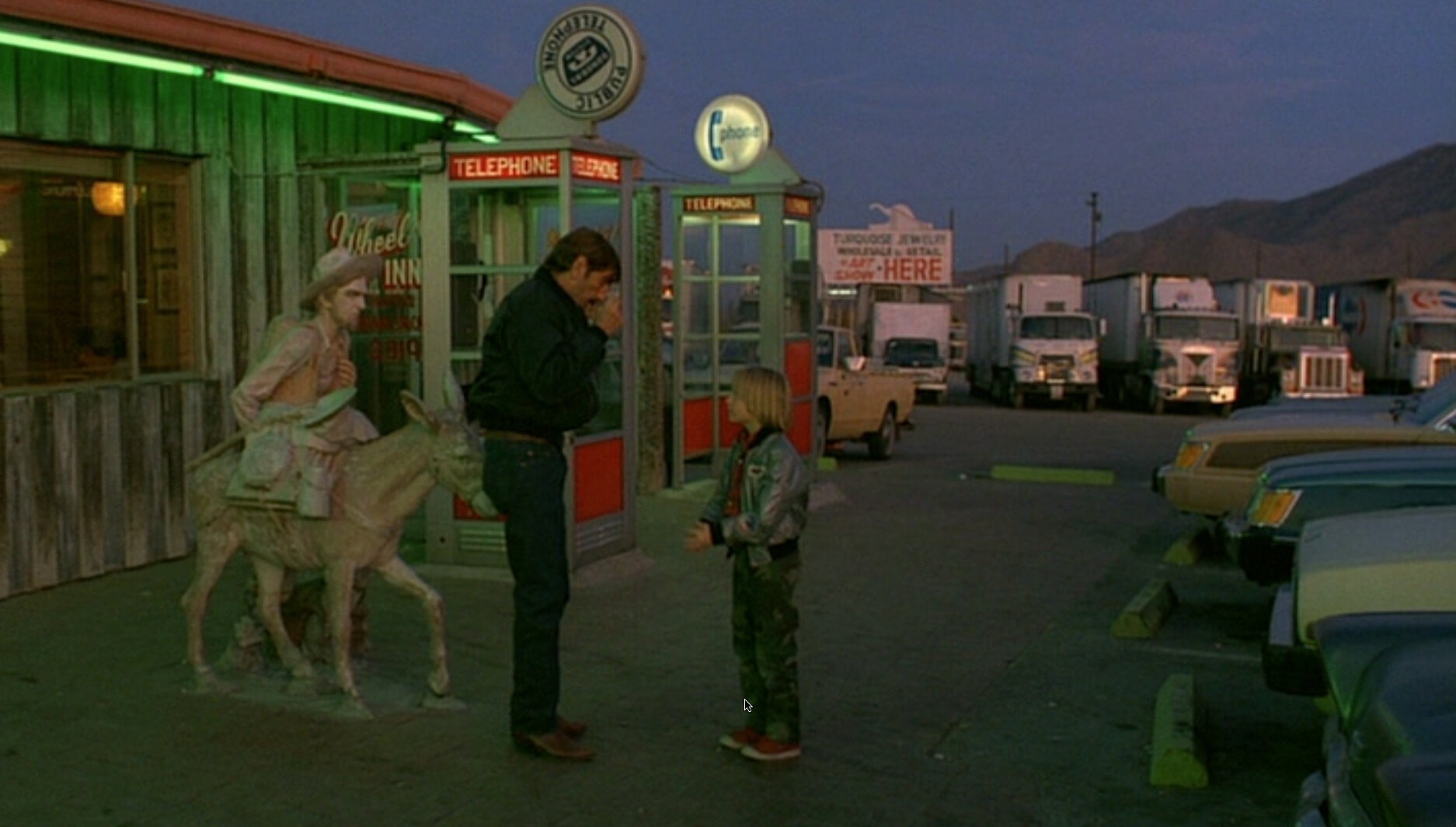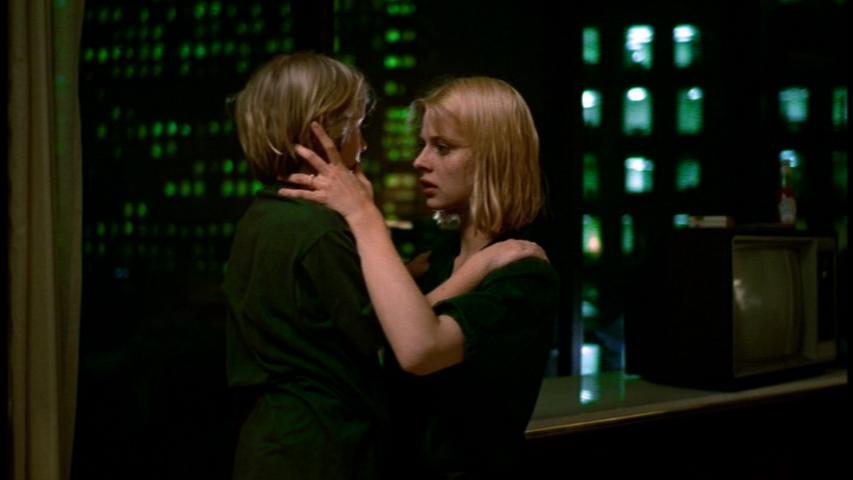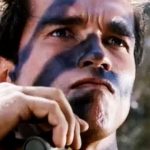Paris, Texas (1984)

Paris, Texas (1984), directed by Wim Wenders, is a haunting and visually stunning film that explores themes of personal redemption, fractured relationships, and the vast emotional landscapes that mirror the physical expanses of America. Produced in West Germany, with collaborative efforts from France and the United Kingdom, Paris, Texas was filmed in various American locations, particularly the arid deserts of Texas and California. The film, with its minimalist style, complex emotional core, and evocative cinematography, stands as one of the defining films of the 1980s, touching on universal themes of love, loss, and the struggle to find meaning and connection in a world that often feels indifferent.
At the heart of Paris, Texas is the story of Travis Henderson (played by Harry Dean Stanton), a man who has been wandering the American Southwest in a state of amnesia for four years after disappearing without a trace. The film begins with Travis being found by his brother, Walt (played by Dean Stockwell), in a remote desert town. Travis is brought back to Los Angeles to reunite with his young son, Hunter (played by Hunter Carson), whom he had left behind when he disappeared. The film then unfolds as a powerful exploration of Travis’s journey of self-discovery, the painful reconciliation with his past, and his efforts to heal the fractured relationship with his son.
The film opens with a strikingly desolate image of Travis wandering through the arid landscape of the Texas desert. His sudden reappearance after years of absence is a mystery, both to his family and to himself. When Walt finds Travis, he is a broken man—silent, lost, and distant—without any memory of what has happened during the time he was missing. Travis is physically and emotionally battered, but Walt takes him in, trying to help him piece together the events of the past. Walt also encourages Travis to reconnect with Hunter, who has been living with Walt and his wife, Anne (played by Aurore Clément).
As Travis and Hunter begin their awkward reunion, the film gradually reveals the complicated history that has led to Travis’s emotional and psychological scars. It becomes clear that Travis has not only been absent from his son’s life but also from his wife, Jane (played by Nastassja Kinski), whom he abandoned years earlier. Over the course of the film, Travis embarks on a journey to find Jane and attempt to make amends for the painful choices he made that led to his emotional and physical estrangement from his family.
Travis’s journey to find Jane becomes the emotional heart of Paris, Texas. The search for her takes him across the American Southwest and into a labyrinth of memories and regrets. Along the way, he faces the harsh realities of his past and begins to reconcile with the choices that led to his abandonment of his family. The search for Jane ultimately leads Travis to a pivotal moment of truth, where he must confront his own sense of guilt, loss, and redemption. Paris, Texas is a film about a man trying to find his way back not only to his family but also to himself.
Paris, Texas is a film rich in themes of loss, redemption, and reconciliation. Travis’s emotional and physical journey reflects the internal journey he must take to come to terms with his past. His disconnection from the world and his estrangement from his son are symbolic of a deeper sense of alienation and guilt that he has carried with him since abandoning his wife and child. The vast, empty landscapes of the American Southwest serve as a powerful visual metaphor for Travis’s emotional emptiness, as well as the sense of isolation that permeates much of the film.
The theme of redemption is central to the narrative, as Travis seeks to right the wrongs of his past and repair the broken relationships in his life. His reunion with Hunter is one of the first steps toward redemption, though it is clear that the emotional distance between father and son cannot be bridged easily. Their relationship is complicated, and Hunter is understandably hurt by his father’s abandonment. The film delicately portrays the tension between the desire for reconciliation and the deep scars that remain from years of separation.
Travis’s search for Jane represents his attempt to find closure, not just for himself but also for his family. The film takes a bold approach to its depiction of Travis’s relationship with Jane, revealing the deep emotional complexities between them. Travis’s love for Jane, his guilt over leaving her, and the pain of seeing her again all come to a head in the film’s emotionally charged final scenes.
In the final moments of the film, Travis and Jane have a pivotal conversation in a peep-show booth—a moment that encapsulates the film’s themes of alienation, love, and the inability to fully return to the past. This conversation, where Travis attempts to explain himself to Jane and reclaim their lost love, is poignant and heartbreaking, highlighting the fragility of relationships and the difficulty of forgiveness.
One of the most striking aspects of Paris, Texas is its use of the American landscape. Cinematographer Robby Müller, who worked closely with Wim Wenders, captures the barren, empty spaces of the desert in a way that is both haunting and beautiful. The wide shots of the vast, open desert contrast with the intimate, emotional moments between the characters, emphasizing the isolation and emptiness that Travis feels.
The American Southwest is more than just a backdrop for the film; it becomes a character in its own right. The arid, open landscape mirrors the emotional distance and loneliness of the characters, particularly Travis. The imagery of wide, sweeping vistas is used to great effect, showing the emptiness of the world around the characters and amplifying their internal struggles. The desolate beauty of the desert underscores the emotional desolation that Travis experiences throughout the film.
In contrast to the vastness of the desert, the urban landscape of Los Angeles offers a different kind of emotional terrain. The city represents the complexities of modern life, the disconnection between people, and the emotional fragmentation that Travis faces in his attempt to reconnect with his son. This juxtaposition of natural and urban landscapes is key to understanding the internal conflict of the characters and their search for meaning and redemption.
The film features a remarkable cast, with each actor bringing depth and nuance to their roles. Harry Dean Stanton’s portrayal of Travis Henderson is one of his most iconic performances. Stanton, known for his ability to convey deep emotion through silence and minimal dialogue, gives a haunting and understated performance as a man struggling with guilt, loss, and the need for redemption. Travis is a man of few words, and much of the film’s emotional power comes from Stanton’s ability to express the character’s inner turmoil through his facial expressions and body language.
Dean Stockwell, as Travis’s brother Walt, provides a steady and grounded presence in the film. Walt’s role as the more stable and pragmatic figure in the family contrasts sharply with Travis’s erratic behavior and emotional instability. Stockwell’s performance adds a layer of emotional depth to the film, especially in his scenes with Travis, where the two brothers try to navigate their difficult relationship.
Nastassja Kinski, as Jane, is equally compelling in her role. Jane’s emotional complexity is revealed gradually as the film progresses, and Kinski skillfully portrays a woman who is both longing for closure and protective of the life she has built since Travis left. Kinski’s portrayal of Jane is both vulnerable and strong, capturing the pain of her past while also showing her attempts to move forward.
The young Hunter Carson, playing Travis’s son Hunter, delivers a strong performance as a child caught between the conflicting emotions of love, abandonment, and the desire for a father figure. His performance adds a layer of poignancy to the film, especially in his scenes with Travis, where the emotional weight of their reunion is felt deeply.
Wim Wenders, known for his contemplative and poetic filmmaking style, brings a unique sensibility to Paris, Texas. The film is slow-paced, allowing time for reflection and introspection, with long takes that focus on the emotional nuances of the characters. Wenders’s direction emphasizes the quiet, internal struggles of the characters, letting the silence speak volumes. This method allows the film’s themes of isolation and personal redemption to resonate deeply.
The cinematography by Robby Müller is visually stunning, with the American landscapes providing a striking contrast to the emotional arcs of the characters. The film’s use of color—especially the rich reds, browns, and yellows of the desert—further enhances the emotional impact, with the barren landscape acting as both a symbol of the characters’ isolation and a place for potential renewal and healing.
The minimalist approach to the film’s score, composed by Ry Cooder, complements the visual style and tone of the film. Cooder’s music—marked by its haunting, bluesy guitar lines—adds another layer of emotional depth to the film. The score’s sparse yet evocative melodies serve to heighten the emotional resonance of the film’s key moments without overwhelming the audience.
Paris, Texas is a poignant, thought-provoking film that combines rich thematic exploration with visually striking cinematography and powerful performances. Through its intimate portrayal of loss, redemption, and the search for personal meaning, the film speaks to universal human experiences of pain, guilt, and the longing for connection. The film’s understated style and slow pace allow the characters to develop in a way that feels organic and deeply emotional, making Paris, Texas a cinematic masterpiece. Wim Wenders’s direction, combined with the haunting performances of the cast, makes the film one of the most memorable and profound cinematic works of the 1980s, capturing the complexities of human relationships and the landscapes of both the American West and the human soul














